DuluthiLeaks: Duluth Foghorn Facts
It’s been 100 years since Duluth’s original diaphone fog siren was installed at the Duluth Shipping Canal. That siren was decommissioned by the Coast Guard in 1968 and replaced by an electric whistle. In 1983 another old diaphone foghorn was acquired and installed. It was used on a ceremonial basis until 1995, then returned to regular service as a maritime aid to navigation. Community members immediately complained it was too loud. The controversy raged on until the horn was dismantled in 2006.
For the sixth edition of DuluthiLeaks — Perfect Duluth Day’s series in which public documents are presented as if they contain secret information leaked from an anonymous whistle blower — we present “Duluth Foghorn Facts,” a document and collection of images compiled by Jeffrey L. Laser of Bellville, Ohio. At some point after 1996, Laser put together the information below, delving into the nitty gritty of the diaphone foghorn that was housed in the Duluth South Breakwater Outer Light from 1983 to 2006.
Laser was a representative of TOOT, the organization that formed in 1976 to bring back the old style of fog signal. The acronym stands for “reTurn Our Old Tone.” According to an online obituary, Laser died in 2016.
Duluth Foghorn Facts
Something unique and special can be seen and heard at the end of the south pier of the Duluth Ship Canal. A rather short structure, the Duluth South Breakwater Outer Light, houses the machinery and horns that comprise the Duluth foghorn. What’s so special about the Duluth foghorn? It is the last compressed-air diaphone foghorn in service as a maritime aid to navigation in the United States, and possibly the rest of the western hemisphere.
After an absence of 27 years, a replacement diaphone foghorn was installed and returned to active duty as the primary fog signal in the Duluth harbor on April 1, 1995. The original diaphone foghorn was installed in 1923, activated in 1924 and served as a faithful warning device during periods of low visibility until its decommissioning and removal from the lighthouse in October of 1968.
In a nationwide effort to standardize and automate all land-based aids to navigation, the U.S. Coast Guard removed the old Type “F” diaphone foghorn in favor of a smaller electronic horn, called an ELG-500 pure tone signal, that could easily be activated by an unmanned automatic fog detection system. Gone was the penetrating upper tone and the deep bellowing terminating “grunt” tone of the old diaphone. In its place was a weak high pitched single tone horn that sounded more like a child’s toy whistle that a foghorn!
Almost immediately, a large number of outraged citizens of Duluth (including grade school children) began to contact city, state, and federal government officials in an attempt to have the old diaphone foghorn reinstalled and reactivated! Duluth is a classic harbor town and the sound of the old foghorn added a true maritime ambiance to the surroundings! In 1976, a group of concerned citizens formed TOOT Inc., an acronym for reTurn Our Old Tone, in a effort to petition the U.S. Coast Guard to locate either the original Type “F” diaphone foghorn that served at Duluth for 44 years, or a similar replacement, and have it installed and activated as the primary foghorn in Duluth’s harbor.
After several years of political pressure from one of Minnesota’s U.S. congressmen, a diaphone foghorn was located and signed over to TOOT. The replacement diaphone foghorn equipment was in the process of being removed from the pier head light at Kewaunee, Wisconsin and had been “earmarked” for transferal to the SMITHSONIAN INSTITUTION in Washington, D.C. when it was diverted to the project at Duluth. The foghorn equipment from the Kewaunee installation was installed in the Duluth South Breakwater Outer Light in the fall of 1983 after spending a brief period of time mounted on a mobile platform that was towed to various events in order to generate interest and revenue for the reestablishment of the diaphone as an aid to navigation.

Both horns of the former Kewaunee, Wisconsin installation mounted in the Duluth South Breakwater Outer Light.
Before the diaphone could be placed back on active duty, it had to meet several sound pollution standards and an Environmental Impact Assessment had to be conducted as well as the construction of a “fail-safe” system that would activate the Coast Guard’s pure tone signal should the diaphone malfunction or fail to operate. The diaphone would also need to be interfaced with the Coast Guard’s automated low visibility (fog) detection equipment. In 1984, the diaphone foghorn was allowed to operate on a “ceremonial” basis (at noon and special occasions) and a few minutes, on the hour, during periods of low visibility from 08:00Am – 10:00 Pm. Several years of testing sound pressure levels from various locations throughout the city ensued before operation of the diaphone foghorn would be approved by the MINNESOTA POLLUTION CONTROL AGENCY, the
OCCUPATIONAL SAFETY & HEALTH AGENCY, and the agency of HOUSING AND URBAN DEVELOPMENT. After 11 years of testing and preparation, the diaphone foghorn went into operation as a maritime aid to navigation on April 1st, 1995. The old foghorn was back!
Diaphones were a once familiar sound heard throughout the Great Lakes from the early 1920s until the late 1960s / early 1970s when most lighthouses were automated. 120 such installations existed on both U.S. and Canadian waterways in the 1950s. The two most commonly heard diaphones were the “Standard” diaphone, which gave a full steady upper tone that terminated in a heavy “grunt” tone, and the classic two-tone diaphone that produced an upper tone followed by a full steady low tone of equal or greater duration than the upper tone.
In 1895, Robert Hope-Jones, an English pipe organ designer and builder, developed a special tone generator for his famous WURLITZER organ; the WURLITZER was a popular musical instrument in the days of silent movies and live stage performances. The new tone generator consisted of a casing that contained a slotted cylinder with a similarly slotted piston. Air was channeled through the casing in such a way that it caused the piston to reciprocate within the cylinder. The major portion of the air was discharged through the slots in both the piston and cylinder as the piston stroked back and forth in the cylinder. As the air passed through slots in the piston, it was “chopped” which caused a vibration that was amplified though a long cone shaped trumpet. Hope-Jones labeled this new tone “diaphonic” (meaning two or more tones”). The new tone had a full, powerful harmonic structure that could be heard over some of the other tones on the pipe organ. He called his new tone generator a diaphone.
Around 1900, John Pell Northey, a machinist / inventor who owned a factory that made valves and pipe fittings, met with Robert Hope-Jones soon after Hope-Jones moved to the United States. John Pell Northey took an interest in Hope-Jones’s invention and after some negotiating, obtained the rights to patent the diaphone. Northey immediately redesigned the diaphone so that a secondary air supply could be directed to the cylinder, which would give the piston a more vigorous and uniform means of reciprocating within the cylinder. Northey called this modification to the casing the “motor” section (or chamber). By increasing the overall size of the instrument and adding his motor air chamber, John Pell Northey had developed an extremely powerful, harmonically rich sound signal that would soon become the greatest foghorn ever produced. In 1903, Northey patented his improvements to Robert Hope-Jones’s invention and formed his DIAPHONE SIGNAL Co. COY LTD. (also known the CANADIAN SIGNAL Co.) at Toronto, Ontario, Canada. The first Diaphone employed as a foghorn in the U.S. was at Buffalo, N.Y. in 1914. Diaphones ranged in size and function from the tiny single tone Type “A” to the “Standard” units (Types “C-C” through the huge Type “L”) which produced a high tone that terminated in a heavy descending “grunt” tone, to the classic two-tone Type “F-2-T” foghorn.
The original diaphone foghorn at Duluth consisted of a pair of “Standard” Type “F” diaphones. The Type “F” unit was the most commonly employed diaphone worldwide. The sound of the Type “F” diaphone is produced by low-pressure air [35 – 40 Psi (pounds per square inch)] being introduced to the piston and cylinder through the motor and speaking chambers of the diaphone’s casing. The main air supply to a typical Type “F” diaphone is through 4” pipe to the speaking chamber and 1- ½” pipe to the motor chamber. At some point near the diaphone, the 4” pipe is reduced down to 1- ½” pipe. The 1-½” air supply to the motor chamber is controlled by a 1-½” air actuated operating valve called the motor valve. The motor valve usually has a threaded input and a flanged output. The motor valve also has a ¼” inlet at the bottom of the valve body, and a ¼” outlet between the valve body and the output flange. The ¼” inlet is from a timer that activates a pilot valve (usually a solenoid of some type) which in turn activates the motor valve.
“Speaking” air is the air supply that actually flows through the slots in the piston and cylinder and creates the tones of the diaphone. The Speaking valve is configured similarly to the motor valve but it is much larger (4”) and has no ¼” outlet near its output flange.
The operation of the “Standard” diaphone is as follows: Until the timer (or code machine) opens the pilot valve, the control air supply to both operating (motor and speaking) valves, and the air supply to both the motor and speaking functions is restrained behind each valve respectively. When the timer activates the pilot valve, control air passes along the control air tubing to the ¼” inlet in the bottom of the motor valve. The control air lifts a piston in the lower chamber of the valve body which in turn lifts a valve stem / valve disk assembly. As the valve disk lifts from its seat, the full force of the motor air supply is allowed to pass through the valve to the motor chamber of the diaphone. Some of the motor air is diverted through the ¼” outlet at the output side of the motor valve. The diverted motor air travels down a short length of tubing to the ¼” inlet in the bottom cover of the speaking valve and lifts the piston / valve stem / valve disk assembly in the speaking valve. As the speaking valve opens, the main charge of speaking air flows into the speaking chamber of the diaphone. Almost instantly and, simultaneously, the motor air causes the piston to reciprocate in the cylinder as speaking air is forced between the slots in both the cylinder and piston. The combination of the action of the motor air and speaking air creates a high tone of approximately 250Hz. (Hertz, or cycles per second). When the diaphone timer closes the pilot valve, the flow of control air to the motor valve ceases and the motor valve closes. The closing of the motor valve causes an interruption of the flow of motor air to the motor air chamber as well as the flow of control air to the speaking valve. There is some “lag” in the closing of the operating valves. The motor valve closes first, which causes the diaphone piston to begin to slow down. Due to the lag between the closing of the valves, a final puff of reduced pressure speaking air is forced through the slots in the less rapidly reciprocating piston. This action creates a tone of much lower frequency than the high tone (somewhere between 93 – 150 Hz.). This brief low tone is referred to as the “grunt” tone in “Standard” operation of the diaphone. Mariners could sometimes hear the grunt tone when the high tone was “masked” by other sounds or the vessel was at a great enough distance from the foghorn that the high tone would be inaudible anyway (low frequency sounds carry farther, in air than high frequency sounds).
As mentioned earlier, the original diaphone foghorn at Duluth was a “Standard” Type “F” diaphone. The replacement diaphone installed in 1983 is a special modified and “improved” version of the Type “F” unit. Around 1929, John Pell Northey’s son Rodney redesigned the Type “F” diaphone so that the normal grunt tone could be extended to produce a full steady sustained low tone of equal or greater duration than the high tone. This modification to the Type “F” diaphone proved so effective that it was used to replace the larger Type “G” and Type “K” units in the U.S. (only 1 Type “K” diaphone was ever employed in the U.S. and that location was on the Farallon Islands off the coast of California) and became the standard for all new major installations. Rodney called his new revision the “Improved” Type “F” diaphone. In fact, some of the early issues of this unit have simply TYPE “F” DIAPHONE nameplates.
By 1932 Rodney Northey had inherited the DIAPHONE SIGNAL Co. from his father. Due to the effects of the Great Depression on the Canadian economy, Rodney was forced to sell the company in order to stay financially “afloat” and marry his fiancé. Most of the patent rights, foundry patterns, blueprints, and machining tools were obtained by DECK BROTHERS – PRECISION MACHINISTS of Buffalo, New York under contract by, and for, the U.S. Government (more specifically the U.S. Lighthouse Service). After this transaction occurred, the name of the Improved Type “F” diaphone was “Americanized” and changed to Type “F-2-T” diaphone.
The “F” in “F-2-T” means that the diaphone is essentially a Type “F” diaphone [the diameter of the piston in both units is approx. 5” and both units employ the same size of resonator (trumpet) and operating valves]. “2-T” means that the unit produces a true two-tone signal where the low tone is a sustained tone instead of a “grunt”. “F-2-T” diaphones were more commonly heard on the west coast and frequently used on lightships on U.S. waterways. Recordings of these two-tone foghorns can be heard in old cartoons, old radio and television shows (i.e.; the door bell on the ADDAMS FAMILY), old movies, and even a soap commercial that exclaimed that their product prevented “BEEEE-ooooh”. A nice feature of the “F-2-T” diaphone is that it can be configured to operate as a “Standard” Type “F” diaphone (as was the case at Kewaunee, Wisc. and several other locations on the Great Lakes).
The current pair of diaphones in use at Duluth are “F-2-T” units installed and configured to duplicate the sound of the original Type “F” diaphone foghorn. Only one horn is employed at any given time. The other horn “stands watch” as a back-up in case of malfunction, failure, or the need to perform maintenance on the primary horn.
Compressed air for the foghorn is provided by one of two air compressors (one is used as a spare in case of a failure or malfunction to the other unit) and stored in a huge 5’ X 12’ air receiver (air tank). The compressed air is stored in the receiver until the timer activates the pilot valve and operating valves of the foghorn. The horn will then sound an appropriately timed blast and the air compression and storage (recovery) cycle will repeat until the next blast sequence.

The air compressor on the left is the old U.S. Coast Guard issue WORTHINGTON / WESTINGHOUSE 146 Cfm (cubic feet per minute) unit that came to Duluth as part of the system from Kewaunee, Wisconsin. This air compressor is used as a spare. The air compressor on the right (a 125 Cfm unit built by GARDNER-DENVER.) is the primary air compressor. This air compressor was donated to the TOOT effort by the City of Duluth.
Since there is no lighthouse keeper to activate the foghorn when a low visibility event (fog, snow, heavy rain, or even smoke) occurs, the diaphone is connected to an automatic low visibility detector that will activate the air compressor and electronic timer for the foghorn. The low visibility detector sends out a pulsed beam of light that is reflected back into a photoelectric receiver tube as visibility decreases. When the atmospheric visibility decreases to less than 1 ½ miles, the foghorn will start up. If the diaphone system should fail, a sensor will detect that failure and activate the U.S. Coast Guard’s current 390 Hz. ½ mile range pure tone signal.
An extremely accurate computerized clock (called the DTCU – Diaphone Timing Control Unit) provides the timing sequence (characteristic) for the foghorn. When the air compressor is activated, a switch starts the DTCU counting backwards (for about 5 minutes) until it prompts the first blast sequence from the foghorn. From that point on the DTCU provides the proper characteristic for the foghorn. The sequence is:
4 seconds on,
56 seconds off,
4 seconds on,
56 seconds off,
1 second on,
1 second off,
5 seconds on,
53 seconds off.
This sequence repeats as long as the low visibility detector keeps the diaphone operating (one 3 minute sequence occurs each day at noon, May 1st – October 31st). This characteristic duplicates the old radio-synchronous distance finding sequence of the original diaphone installation. The original foghorn was synchronized with the light station’s radio beacon every 3rd (or radio minute) of operation.
During periods of low visibility, the radio beacon would send out a repeating Morse code that identified the light station as the Duluth South Breakwater Outer Light, Duluth, Minnesota. While the radio beacon was sending out its signature code, the foghorn was sounding its own code (characteristic), a 4 second blast during each minute of the first two minutes of its 3 minute cycle. On the third minute of this cycle, or “radio minute”, the radio beacon and the foghorn would simultaneously send out a 1 second “warning” signal that would alert the bridge officers of a ship that they were approaching a radio-synchronous distance finding station. The 5-second blast that followed a 1 second period of silence was also radio-synchronous. After a 53 second period of silence, the sequence would start again, as long as low visibility persisted.
As a ship approached Duluth in dense fog, the wheelsman, or some other bridge officer, would be listening to the radio receiver for the radio signal (Morse code) and the sound of the foghorn. Since a radio signal travels at near the speed of light (186,000 miles per second), and sound of the foghorn in air travels at the speed of sound (1,100 feet per second, the radio signal will reach the ship first. The time interval between the reception of the radio signal and the arrival of the foghorn blast was multiplied by 1,100 (feet). This way, the bridge officer could calculate the ship’s distance from the distance finding station.
The present foghorn is not connected to a radio beacon. In fact, the radio beacon at Duluth was taken out in 1996. Radio-synchronous distance finding was at best an inaccurate method of navigation in fog and was discontinued in the late 1960s. The characteristic of the former Duluth foghorn has been retained for posterity.
Since its establishment as a maritime aid to navigation in the Duluth harbor in 1995 it has been the hope of many maritime history enthusiasts, and a majority of Duluth’s citizens alike, that the unique sound of the diaphone foghorn may be heard and enjoyed by many generations to come.
TOOT Inc.
P.O. Box 102
Duluth, Minnesota 55801
(218) 728-2079
Ohio TOOT Representative
Jeff Laser
216 Bell St.
Bellville, Ohio 44813
(419) 886-3340
Member:
Association for Great Lakes Maritime History
Special thanks to:
U.S. Coast Guard
Aids to Navigation Training School
Yorktown, VA.
For providing copies of the old Aids to Navigation Training Manual.
And, Ken Black, curator of the Shore Village Museum, Rockland, Maine.
Recommended Links:
Leave a Comment
Only registered members can post a comment , Login / Register Here


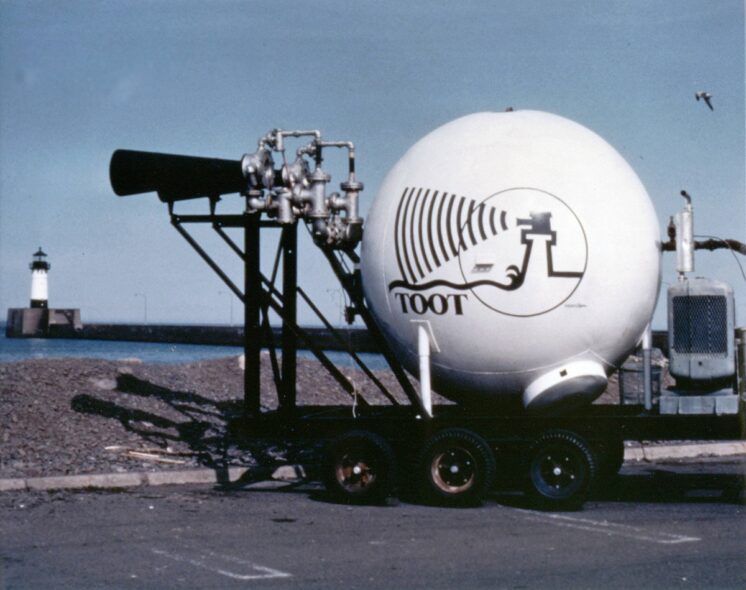
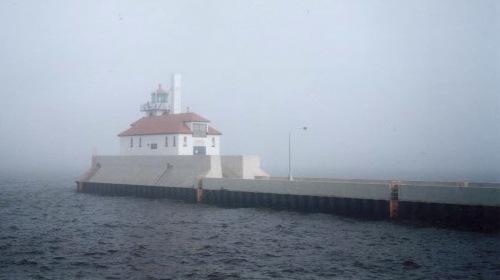




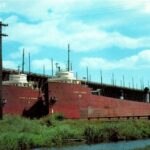
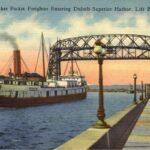
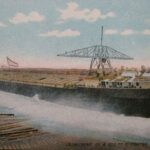







No Comments